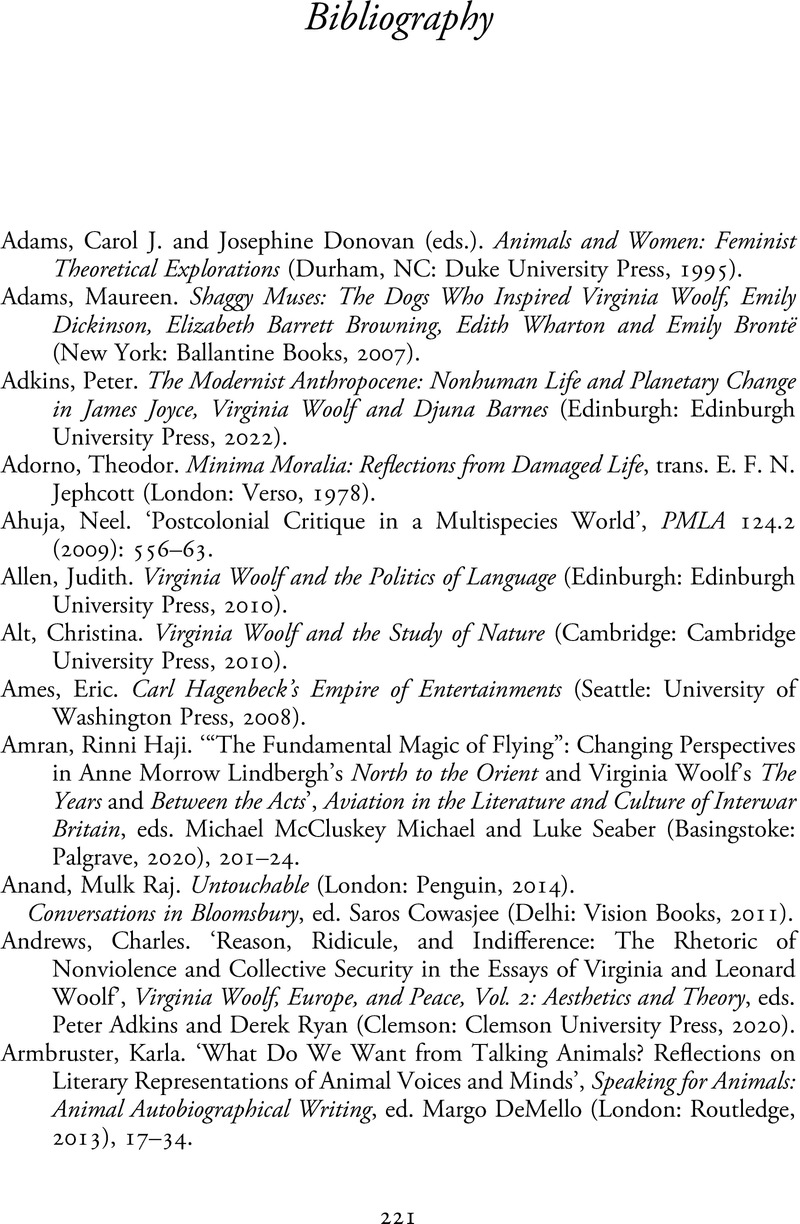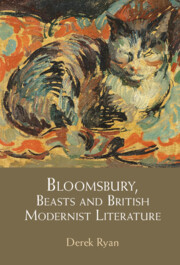Book contents
- Bloomsbury, Beasts and British Modernist Literature
- Frontispiece
- Bloomsbury, Beasts and British Modernist Literature
- Copyright page
- Dedication
- Contents
- Figures
- Acknowledgements
- Introduction
- Chapter 1 Leonard Woolf in the Jungle
- Chapter 2 David Garnett and Zoo Fictions
- Chapter 3 Virginia Woolf and Animal Biography
- Chapter 4 E. M. Forster’s Nonhuman Bundle
- Chapter 5 David Garnett, Flight and Earthly Creatures
- Coda
- Notes
- Bibliography
- Index
- References
Bibliography
Published online by Cambridge University Press: 01 December 2022
- Bloomsbury, Beasts and British Modernist Literature
- Frontispiece
- Bloomsbury, Beasts and British Modernist Literature
- Copyright page
- Dedication
- Contents
- Figures
- Acknowledgements
- Introduction
- Chapter 1 Leonard Woolf in the Jungle
- Chapter 2 David Garnett and Zoo Fictions
- Chapter 3 Virginia Woolf and Animal Biography
- Chapter 4 E. M. Forster’s Nonhuman Bundle
- Chapter 5 David Garnett, Flight and Earthly Creatures
- Coda
- Notes
- Bibliography
- Index
- References
Summary

- Type
- Chapter
- Information
- Bloomsbury, Beasts and British Modernist Literature , pp. 221 - 238Publisher: Cambridge University PressPrint publication year: 2022

